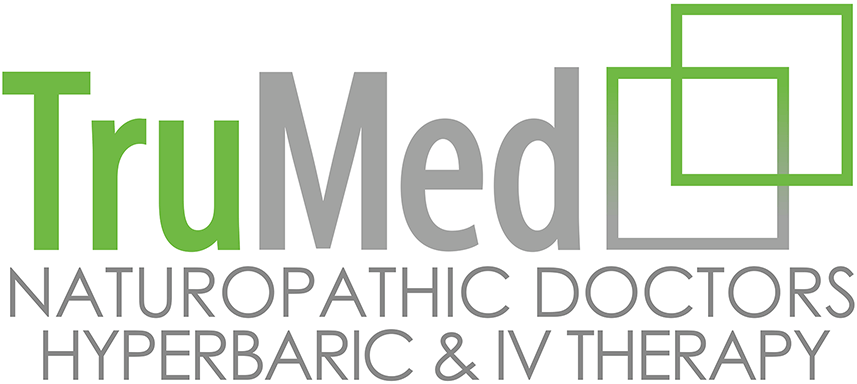Surgical Recovery Support in EdmontonWe have options for improving healingWe can support patients both before and after various surgical procedures.
|
||

Enhance Surgical Healing |
||
BackgroundAny surgical procedure carries the risk of complications, including wound-healing problems. The use of Hyperbaric Oxygen Therapy is an accepted method of supporting wound healing. HBOT is a safe and effective treatment option that promotes the systematic repair of ischemic tissues by enabling the direct diffusion of oxygen through the inhalation of 100% oxygen in a pressurized chamber. It's reasonable to assume patients undergoing surgery desire a fast recovery so they can return to their daily activities. The duration required for wound healing has been shown to be dramatically lower with the use of HBOT in a number of case reports and studies. Aesthetic surgery has gained increasing popularity over the past few decades - as such our office has helped numerous patients with aesthetic postoperative care. Risk factors for poor surgical outcomes:• Age • Hypertension • Poor nutritional status Hyperbaric Mechanisms - Surgery Support
Increased tissue oxygenation Breathing oxygen under Hyperbaric conditions can increase arterial oxygen tensions twenty fold and tissue oxygen tensions ten fold and therefore dramatically improve tissue oxygenation. Increased Collagen Production - The fibroblast is one cell responsible for soft tissue healing (forms collagen) - Hyperbaric treatment dramatically increases fibroblast proliferation. Control of infection HBO can enhance the efficiency of white blood cells to kill pathogens in addition to control of anaerobic organisms as well as improving the efficacy of some antibiotics. Neovascularization Regional stimuli like VEGF influence new blood vessel growth in a process termed angiogenesis - HBO also stimulates the recruitment of circulating progenitor cells to form new vessels. TreatmentOur Naturopathic Doctors have seen improvements in patients primarily using IV Therapy & Hyperbaric Oxygen. In particular, Hyperbaric Oxygen has strong data for its use in surgical recovery. IV Therapy is often punctuated 1-2x weekly in between Hyperbaric sessions. A high potency multi-vitamin, Vitamin A, Glutamine and proteolytic enzymes are often given orally. IV TherapyWe use IV Therapy for aggressive nutritional support before and after surgery. IV Therapy can provide clinically relevant doses of healing nutrients. Vitamin C, Zinc, Selenium as well as B1, B5, B6, B12 and Magnesium are key IV nutrients. We also frequently use our immune Myers Cocktail Vitamin IV with additional Vitamin C. IV therapy is especially helpful because of reduced appetite and oral intake after surgery. Select Hyperbaric StudiesNasr (2023):Hyperbaric Oxygen Therapy for Threatened Nipple-Sparing Mastectomy Flaps: An Adjunct for Flap Salvage Nipple-Sparing Mastectomy is a form of breast conservation surgery. Compromised blood flow or tissue death remain frequent complications of this approach. A retrospective review looked patients treated with HBOT at one center in patients with signs of reduced tissue blood flow. 22 of 25 breasts did not require operative revision (88.0%) Simman (2022):Role of Hyperbaric Oxygen Therapy in Cosmetic and Reconstructive Surgery in Ischemic Soft Tissue Wounds: A Case Series
Case 1: HBOT was initiated at 2.5 ATA and she completed 25 dives. Following HBOT, patient had great improvement of the wound (within 3 weeks). Case 2: A 30-year-old woman who received Juvéderm dermal filler into the left side of her chin presented after 24 hrs with reduced blood flow and mild smile asymmetry. HBOT was initiated at 2.5 ATA and she completed 5 dives. Following HBOT, patient had complete resolution (within 3 weeks) Case 3: A 46-year-old woman underwent multiple surgeries abroad, including abdominoplasty (tummy tuck) and liposuction presented 17 days after surgery with a nonhealing postsurgical wound. HBOT was initiated at 2.5 ATA and she completed 39 dives in addition to surgical debridement. Following HBOT, patient had complete resolution (within 3 months). Case 4: A 73-year-old woman underwent Mohs surgery for skin cancer and developed nasal tip necrosis. HBOT was initiated at 2.5 ATA and she completed 20 dives. Following HBOT, patient had complete resolution (within 5 weeks). Neel (2023):Assessing the Efficacy of Hyperbaric Oxygen Therapy on Facelift Outcomes: A Case–Control Study Comparing Outcomes in Patients With and Without Hyperbaric Oxygen Therapy
HBOT was initiated at 2.0 ATA for 60-90 minutes with 7.22 average sessions used. The time until wound healing in the HBOT group ranged from 7 to 30 days (mean of 13.3 days). compared to the control group, which ranged from 6 to 90 days (mean of 36.9 days). The authors concluded "this indicates a statistically significant shorter time to wound healing in the HBOT group compared to the control group." Spruijt (2021):Hyperbaric oxygen treatment for mastectomy flap ischaemia: A case series of 50 breasts
HBOT was started a median of 3 days (range 1–23) after surgery. HBOT was initiated at 2.5 ATA for 85 minutes with a median of 12 sessions (range 6–22) used. Twenty-nine breasts (58%) recovered without additional operation. Friedman (2019):Hyperbaric Oxygen Preconditioning Can Reduce Postabdominoplasty Complications: A Retrospective Cohort Study
HBOT was started a median of 3 days (range 1–23) after surgery. HBOT was initiated at 2.0 ATA for 90 minutes with 1-3 daily sessions used before surgery. Postoperative complications were significantly reduced from 32.6% to 8.4% with reduced tissue death. Questions about Hyperbaric?
|
||
Pre & Post-Surgical IV Therapy in EdmontonOptimize Recovery with Iron, NAD+, and Vitamin Infusions at TruMed ClinicAt TruMed Naturopathic Clinic in Edmonton, our team of experienced naturopathic doctors and IV nurses specialize in helping patients prepare for — and recover from — surgery using evidence-based intravenous (IV) nutrient therapy. Whether you’re scheduled for elective surgery, joint replacement, or a cosmetic procedure, your body’s nutrient and energy status can dramatically influence healing, immune function, and post-operative recovery. We often recommend a personalized combination of Iron infusions, NAD+ IV therapy, and Vitamin or Myers Cocktail IVs to optimize surgical readiness and support tissue repair afterward. Our Edmonton clinic is fully equipped for IV therapy under medical supervision, with protocols designed to safely enhance cellular energy, oxygen delivery, and recovery speed before and after surgery. Iron Infusions for Surgical Preparation and Recovery in EdmontonWhy Iron Matters Before SurgeryLow iron or iron deficiency anemia can significantly increase fatigue, slow wound healing, and heighten surgical risks such as poor oxygenation and delayed tissue repair. At our Edmonton IV therapy clinic, we provide medically supervised iron infusions to restore optimal iron levels before surgery — ensuring that hemoglobin and ferritin are sufficient to support oxygen transport and healing. A single IV iron infusion can raise ferritin by 100–200 µg/L, often normalizing levels within 1–2 sessions. This is especially important for patients preparing for orthopedic, gynecological, or major cosmetic procedures. How IV Iron Helps Post-SurgeryAfter surgery, blood loss or inflammation can quickly deplete iron stores. Post-operative iron infusions help rebuild hemoglobin, combat fatigue, and accelerate recovery. Patients often report improved stamina and energy within weeks of treatment. At TruMed Clinic, we use Monoferric® (ferric derisomaltose) for most patients, which allows a full 1,000 mg dose in a single 45–60 minute session. For pregnant patients or those requiring smaller doses, Venofer® (iron sucrose) is available. All iron infusions are performed by trained medical staff under careful supervision to ensure safety and comfort. Typical dose: 500–1,000 mg per infusion NAD+ IV Therapy for Cellular Repair & Recovery in EdmontonMitochondrial Support for Surgery & HealingNAD+ (nicotinamide adenine dinucleotide) is one of the most powerful cellular cofactors for energy production and DNA repair — both of which are crucial for recovery after surgery. At TruMed Naturopathic Clinic, we use NAD+ IV therapy to enhance mitochondrial function, reduce oxidative stress, and support tissue regeneration. Many patients experience faster wound healing, better mental clarity, and reduced fatigue following surgery. Why NAD+ Before Surgery?Pre-surgical NAD infusions can prime the body’s energy systems, supporting resilience under anesthesia and stress. Optimized NAD+ levels help maintain mitochondrial efficiency, which can translate to less fatigue and smoother post-operative recovery. NAD+ After SurgeryFollowing surgery, the body’s NAD+ stores are depleted due to cellular repair demands. Post-surgical NAD IVs help restore these reserves, reducing oxidative stress and inflammation. Our Edmonton patients often combine NAD+ infusions with Glutathione or Myers Cocktails to amplify antioxidant support and detoxification. Treatment details:
All infusions are monitored by experienced providers to ensure optimal tolerance and results. Vitamin & Myers Cocktail IVs for Immune and Wound Healing Support in EdmontonNutrient Optimization Before and After SurgeryAt TruMed, our Myers Cocktail IV — a blend of vitamins, minerals, and antioxidants — is one of the most effective ways to boost your body’s nutrient reserves before and after surgery. These infusions deliver key nutrients like vitamin C, B vitamins, magnesium, and calcium directly into the bloodstream for 100% absorption — bypassing any digestive limitations common after surgery. Pre-Surgical SupportBefore surgery, the Myers IV strengthens immune function, optimizes tissue repair mechanisms, and ensures that vitamin C and B-vitamin levels are sufficient for collagen synthesis and wound healing. Post-Surgical RecoveryAfter surgery, nutrient demands increase dramatically. IV vitamin therapy helps:
We often combine the Myers Cocktail with Glutathione or NAD+ for a complete recovery infusion. Typical treatment plan:
Why Choose TruMed in Edmonton
Book Your Pre- and Post-Surgery IV Program in EdmontonPreparing for surgery? Recovering from one? Our IV therapy programs at TruMed Clinic are designed to help Edmonton patients heal faster, feel stronger, and get back to life sooner. Book your complimentary pre-infusion consultation today — we’ll review your blood work, discuss surgical timelines, and create a personalized IV plan for before and after your procedure. TruMed Naturopathic Clinic – Edmonton’s leader in Iron Infusions, NAD+ IV Therapy, and Myers Cocktail Vitamin IVs. Hyperbaric Chambers in Edmonton for Post-Surgical HealingAdvanced Oxygen Therapy for Enhanced RecoveryAt TruMed Naturopathic Clinic in Edmonton, we also offer Hyperbaric Oxygen Therapy (HBOT) — one of the most powerful adjunctive tools for tissue healing and post-surgical recovery. Inside a hyperbaric chamber, patients breathe 100% oxygen at increased atmospheric pressure. This process significantly raises the amount of oxygen dissolved in the bloodstream, enhancing cellular repair, angiogenesis (new blood vessel growth), and immune function. How Hyperbaric Oxygen Helps After SurgerySurgery triggers inflammation, swelling, and temporary oxygen deficits in tissues. HBOT directly addresses these challenges by:
Combining HBOT with IV TherapyAt TruMed Clinic, we often pair Hyperbaric Oxygen Therapy with IV infusions such as Iron, NAD+, and Vitamin Cocktails for synergistic effects. For example:
Our Edmonton hyperbaric chambers are operated by trained staff under medical supervision, ensuring comfort and safety during each session. Typical program:
Why Choose TruMed Clinic in Edmonton
Book Your Surgical Support IV & Hyperbaric Program in EdmontonIf you’re preparing for surgery or recovering from one, TruMed Naturopathic Clinic offers Edmonton’s most comprehensive integrative program. Book your complimentary consultation today — our team will review your labs, discuss your surgical plan, and customize a treatment schedule to optimize your healing before and after surgery. TruMed Naturopathic Clinic – Edmonton’s experts in IV Therapy, Iron Infusions, NAD+ Therapy, and Hyperbaric Chambers. |
